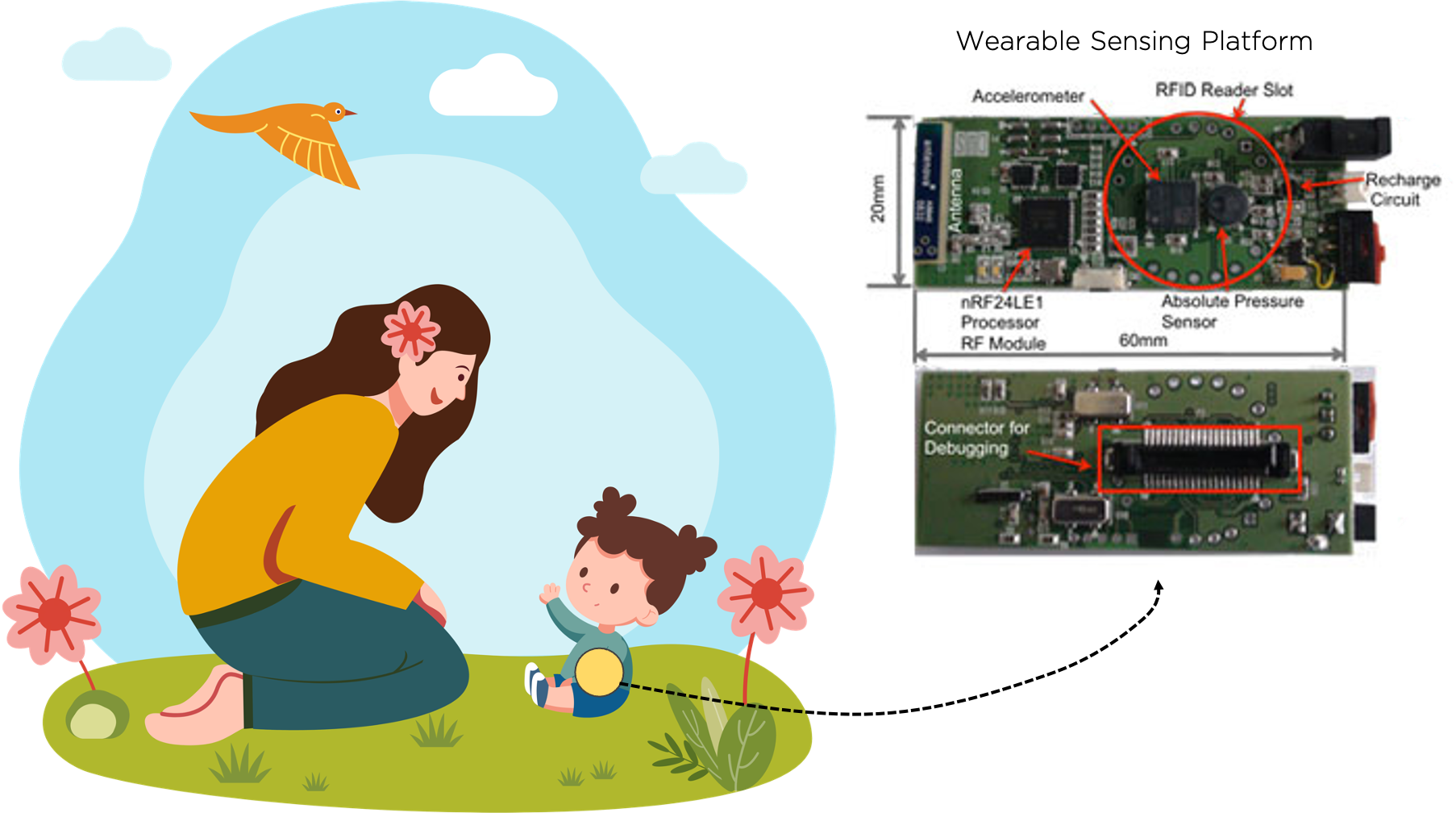Do you want to keep your eyes on your baby at all times?

As babies usually start walking between 9 and 16 months, they are at risk of falling from furniture or stairs. As toddlers learn to climb, they are at risk of falling from windows and beds. Falls are a frequent cause of injury in children. Accident and emergency departments and outpatient surveillance systems show that falls are one of the most common mechanisms of injuries that require medical care, and the most common nonfatal injury that at times needs hospitalisation.
In children younger than four years of age, most fall-related injuries occur at home. Thus, a new safety management method for children is required to prevent child home accidents. Since the major causes of fall-related injuries change as a child grows and develops, fall prevention needs to be addressed. One of the most challenging issues in this context is to classify daily activities of children into safe and dangerous activities.
More than 3 million children experience an unintentional home accident every year. These accidents can be prevented by wearable sensors and activity recognition algorithms. The overall accuracy of our activity recognition was 98.43% using only a single-wearable triaxial accelerometer sensor and a barometric pressure sensor.
We have developed a wearable sensor device and a monitoring application to collect information and to recognize baby activities. We classified baby activities into 11 daily activities which are wiggling, rolling, standing still, standing up, sitting down, walking, toddling, crawling, climbing up, climbing down, and stopping.
Multiple sensors embedded in a wearable device are more accurate for collecting different types of sensing information, but would be very inconvenient for users. For this reason, we present only one single unit of sensor nodes, which collects multiple types of information.
The nature of information interaction involved in sensor fusion can be classified as competitive, complementary, and cooperative fusion. In competitive fusion, each sensor provides equivalent information about the process being monitored. In complementary fusion, sensors do not depend on each other directly, as each sensor captures different aspects of the physical process. The measured information is merged to form a more complete picture of the phenomenon.
Cooperative fusion of the two sensors enables recognition of the activity that could not be detected by each single sensor. Due to the compounding effect, the accuracy and reliability of cooperative fusion is sensitive to inaccuracies in all simple sensor components used. In this project, we select the cooperative fusion model to combine information from sensors to capture data with improved reliability, precision, fault tolerance, and reasoning power to a degree that is beyond the capacity of each sensor.
The main contributions of this project over the earlier previous work are
- To extend the method to work with arbitrary every day activities not just walking by improving the feature selection and recognition procedure
- To perform evaluation on a large (50h) dataset recorded from real life activities
- To have studied ten divers subjects: 16, 17, 20, 25, 27 months-old baby boys and 21, 23, 24, 26, 29 months-old girls
- To employ a barometric pressure sensor for improving upon the previous algorithms
The proposed method classified daily physical activity of children by a diaper worn device consisting of a single-triaxial accelerometer and a barometric air pressure sensor. We demonstrate our improvements in comparison to the accuracy results of only a single-wearable device and multiple feature sets to find an optimized classification method.
